The Ultimate Guide to Lightweight Sleeping Bags
Posted by Andy Neil on Sep 02, 2025
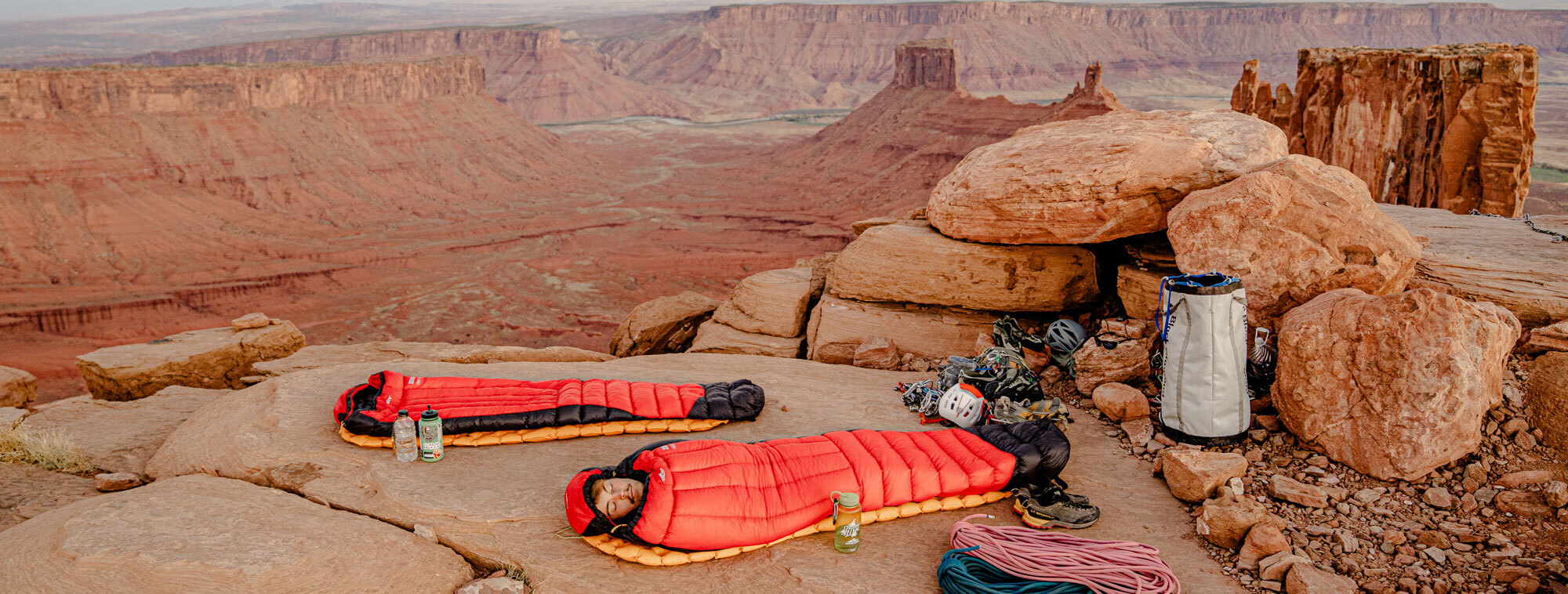
Choosing a sleeping bag can be a daunting task. Getting started with so many different options and variations can be difficult. This will be one of the biggest investments, along with your tent, for backpacking, so it's important that you make the right choice for what you need. We want you to pick the best sleeping bag for your adventures, so we've compiled this guide to help you narrow your search for an ultralight sleeping bag.
Step 1 - Decide the Temperature Rating you need
You will need to consider when and where you will most likely be using your bag, and the temperatures you’ll likely encounter. Its Comfort Rating will describe the temperature a bag can be used.


There is an international standard used to measure a sleeping bag's comfort limits, the EN13537 rating, which you can read more about here. Nearly all reputable sleeping bag manufacturers use this independent standard to better inform the end user, it produces three key ratings.
The 'Comfort Rating', is the lowest temperature at which a “standard” woman can sleep comfortably in the bag. The 'Lower Comfort Limit', is the lowest temperature a “standard” man can sleep comfortably in the bag and lastly, the “Extreme Limit” is the lowest temperature you would survive in an emergency situation. You will not have a pleasant night and almost certainly won't get any sleep. This should not be considered when choosing a bag.
These ratings assume the sleeper wears a base layer, hat, and socks and uses an insulating pad. Men should be interested in the Lower Comfort Limit and women the Comfort rating. However, one component of being warm is our metabolism. Some of us will 'sleep warm', and others will 'sleep cold' - a knowledge of our own tendency will also inform our decision.
Therefore, if you are a man who “sleeps warm” and the lowest temperature you expect to use the bag in is 0C, look for bags with a 0C Comfort Limit. But, if you are a cold sleeper, go for a -1C to -5C bag. Even in high summer, if I'm heading into the hills, I take a sleeping bag rated past freezing, as it’s not worth taking the chance I will be cold. Some people will be heading out in the middle of winter to experience the mountains, where the conditions can be particularly harsh, and a bag with a temperature rating of -20C or below may be required.
Other factors will affect how warm a bag we need, such as; Is your tent a three-season or four-season tent? Will you be in a two-skin tent or a single-skin? Will you be using a sleeping bag liner?
The Importance of Sleeping Mats and R-value.
Your sleeping mat is just as important as your sleeping bag. Mats provide comfort, but, more importantly, mats insulate you from the cold ground, which is key to a warm night's sleep. Nearly all respectable sleeping pad manufacturers will quote the mat's R-Value. R-Value is a measurement used to rate how well your sleeping mat stops heat loss. You can find a more detailed explanation of R-values here, but essentially, the higher the R-value, the better insulated the mat is.
Sleeping bags will only perform at the temperature they have been advertised, provided they are coupled with a warm enough mat. The EN13537 quoted temperatures that bag manufacturers use, assume you are using a sleeping mat with an R-Value of 4, considered a winter-rated mat. A mat with a higher R-value isn't necessarily heavier or bulkier than one with an R-value of 1, There’s no downside to using a winter-rated mat in the warmer months. Unlike using a sleeping bag that is too warm for the conditions, you won't be too hot on a mat with a high R-value.
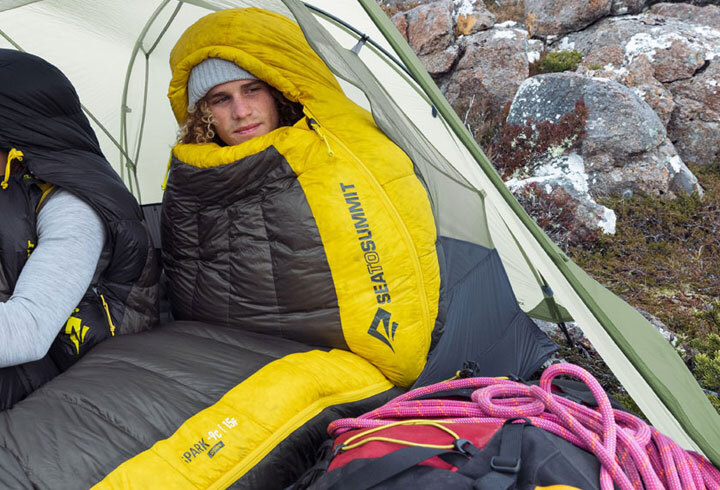
Step 2 - Down or Synthetic?
Nearly all the bags we sell are filled with high-quality down. Down has a far better warmth-to-weight ratio over synthetic bags and packs down much smaller. So, if down performs so much better than its synthetic counterpart, why would anyone buy a synthetic bag?
Down bags are more expensive, and although they tend to have a longer life if looked after, the initial cost will always be higher. Down is also a natural material that some people may be allergic to or, because of ethical reasons, may not wish to use a product that uses materials derived from animals. However, the main advantage of synthetic insulation over down, is that synthetic insulation keeps you warm even when wet.
Most Down is treated with a Hydrophobic coating which helps it repel water, but if it does get wet, it loses its ability to loft and trap heat. A synthetic bag may be better if you use a bivvy bag as a shelter, camp in damp conditions, or use a single-skin tent, that are prone to condensation.
Though synthetic insulation has improved dramatically in recent years, most people will still choose to buy a Down filled bag. Fill power (FP) and fill weight (FWt) are the terms we use to describe the quality and quantity of the down.
Fill power refers to the quality of the down used. The higher the fill power, the higher the quality of the down. Anything with a Fill power over 800 is considered superior quality. As the downs quality increases, its insulating properties also increase, which means you need less, saving you weight.
Fill weight is the quantity of the down in a sleeping bag. It is measured in grams. The higher the fill weight, the warmer the sleeping bag will tend to be. Fill weight is important because it affects the weight and bulk of the sleeping bag.
Two bags, each filled with 400 grams of down, one insulated with 900FP down and the other using 650FP down, should have vastly different comfort ratings, despite weighing the same. Fill Power is the quality, and fill weight is the quantity of down used.
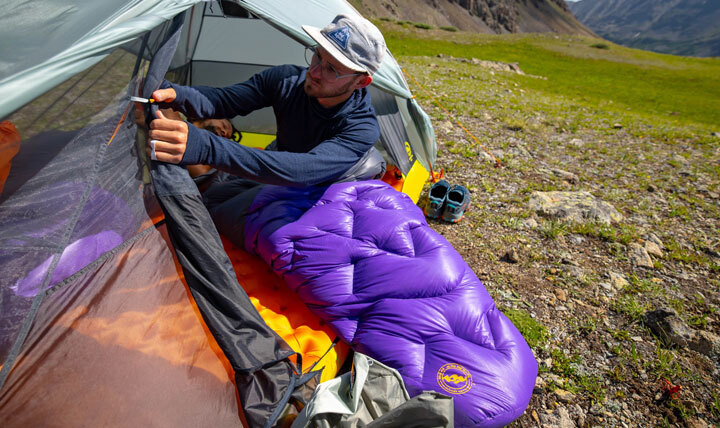
Step 3 - Shape and Size
Size
The insulation in the bag keeps you warm by trapping a layer of still air around your body, thus reducing heat loss by Convection. To eliminate all possible “free space”, choose a sleeping bag that is an appropriate length for you. Bags tend to come in three sizes: small (5 ft. 6 in.), regular (6 ft.), and long (6 ft. 6 in.). Pick the size closest to your measured height.
Mummy Sleeping Bags Vs Rectangular
Mummy sleeping bags are more compact and lightweight than rectangular ones, making them ideal for backpacking and camping. They also tend to be warmer than rectangular sleeping bags, as they wrap around your body more closely. However, they can be more restrictive and less comfortable, especially if you are a side sleeper. Rectangular sleeping bags are roomier and more comfortable but are also bulkier and heavier. They are a good choice for car camping or other activities where weight is not a major concern.
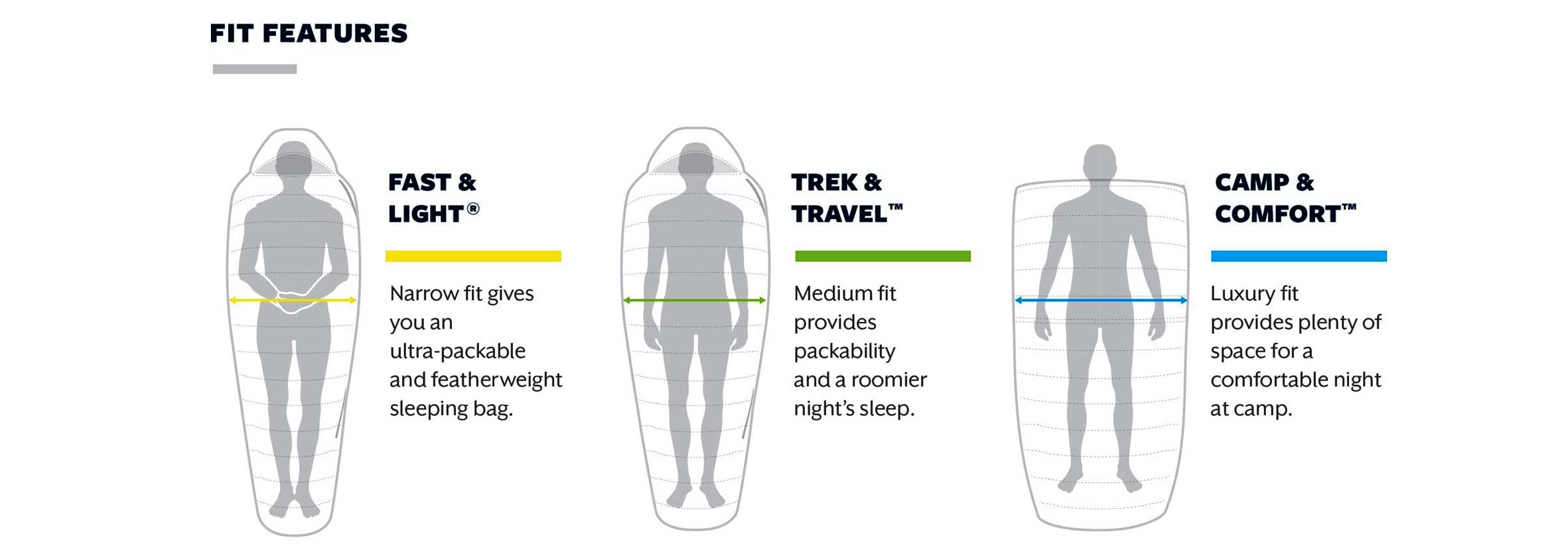
Women-Specific Bags
There are subtle differences between men's and women's sleeping bags, down to biological and physiological variations. Most major sleeping bag brands produce bags specifically for men and women, but some still produce unisex bags. Women's specific bags are generally shorter than men's and have a more tailored fit to better conform to a woman's body. Some Women's specific bags have more down in critical areas such as the feet, which have been proven particularly susceptible to cold for a woman. Biologically speaking, women tend to sleep colder than men, so often, more down is used in the bag to make up the difference in the temperature rating. More in-depth information about women’s specific bags is here.
Quilts
A popular alternative to sleeping bags are quilts. With much less material needed, there is an instant weight saving and, in mild conditions, you may not want the full body wrap of a traditional sleeping bag. Paired with the right mat for insulation from below, quilts can be used year-round with a few adaptions to your system. If quilts appeal to you, you can read our guide here.
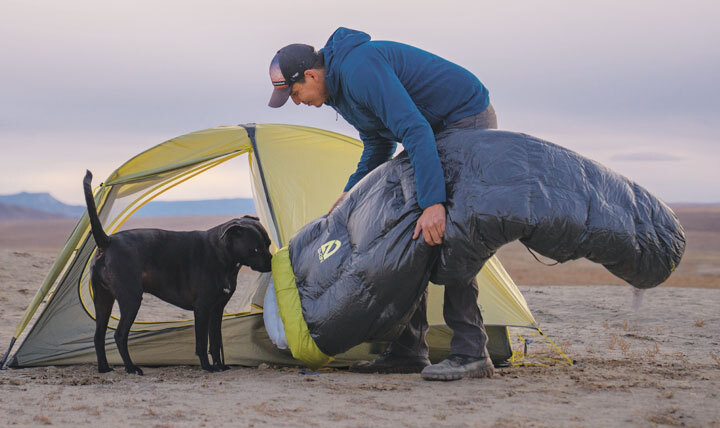
Step 4 - Construction and Features
Shell Fabrics and DWR
The outer layer of a sleeping bag protects the inner insulation from the elements. It will typically be made of ripstop fabric, either nylon or polyester. It will tend to have been treated with a DWR (Durable water repellent) coating. Which is added to fabrics at the factory to make them water-resistant. A DWR helps the fabric shed water and allows it to dry quicker if the bag does get wet.
Sleeping Bag Construction
Compartments are needed to keep the insulation in place, otherwise, it would all migrate to the bottom of the bag.
Sewn Through
The simplest method where lines of stitching are sewn to join two fabrics, creating long pockets for the down to be fed into. The pinch points at the stitching prevent the down from lofting fully in these areas, and there, potential cold spots along the stitch lines can appear where there is no insulation. This isn't as much of a problem with bags intended to be used in warmer conditions.
Box Wall Construction
Overcomes the disadvantages of sewn through by stitching a third piece of material between each layer of fabric to create 'pockets' for the insulation, with walls. This eliminates pinching of the insulation at the stitch lines and allows the down to loft fully.
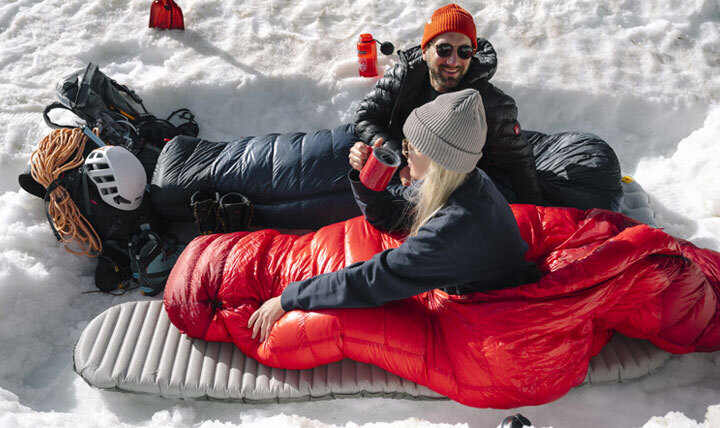
Zips
Most sleeping bags are fitted with a full-length zip that runs the length of the bag almost to the foot. These zips usually have a slider at each end, allowing you to ventilate the bag from the foot end if it's too warm for the conditions.
Some manufacturers make bags with zips on either the left or the right-hand side. A left-hand zip is by your left hand as you lie in the bag on your back. A left-hand zip is suited to a right-handed person as the right arm comes across the body to unzip it, whereas using the left hand to unzip a left-handed zip would be trickier. Some manufacturers only make bags with left-hand zips.
Some bags don't have any zip at all to save weight. These are difficult to get in and out of. Some bags have a short zip on the side or top of the bag - again, this feature saves weight. Access in and out of the bag is fine, but it does not give any options to vent the bag at the bottom.
Baffles and Draft Collars
Where there is a zip, this is a potential cold spot, so, apart from very lightweight bags designed for summer use, most zips are insulated using a baffle or draft collar - this is a down-filled strip which sits across the zip, eliminating it as a cold spot.
Sleeping bags intended for use in colder conditions will also have a shoulder baffle. This prevents draughts and stops air from circulating out of the bag, taking the warmth with it.
Hoodless Sleeping Bags
Hoodless sleeping bags are typically lighter and more compact than sleeping bags with hoods. Of course, they do not offer the same warmth as a sleeping bag with a hood but, they can be more versatile, as they can be used like a quilt in warm conditions or fully zipped up like a standard bag when the temperature drops.

|
||
 |
||
|
Andy Neil |
||
|
Andy has been a keen long-distance hiker and wild camping enthusiast since he completed the Cleveland Way in 2015. Since then, he has walked thousands of trail miles all over the UK and is an active member of the Wild Camping UK community, being an admin of the largest wild camping community on Facebook. He strongly advocates for responsible wild camping and believes it is important to leave no trace when camping in the wilderness. He joined the UOG team in 2021 and works as a website developer and content creator. |
||
Choosing a sleeping bag can be a daunting task. Getting started with so many different options and variations can be difficult. This will be one of the biggest investments, along with your tent, for backpacking, so it's important that you make the right choice for what you need. We want you to pick the best sleeping bag for your adventures, so we've compiled this guide to help you narrow your search for an ultralight sleeping bag.
